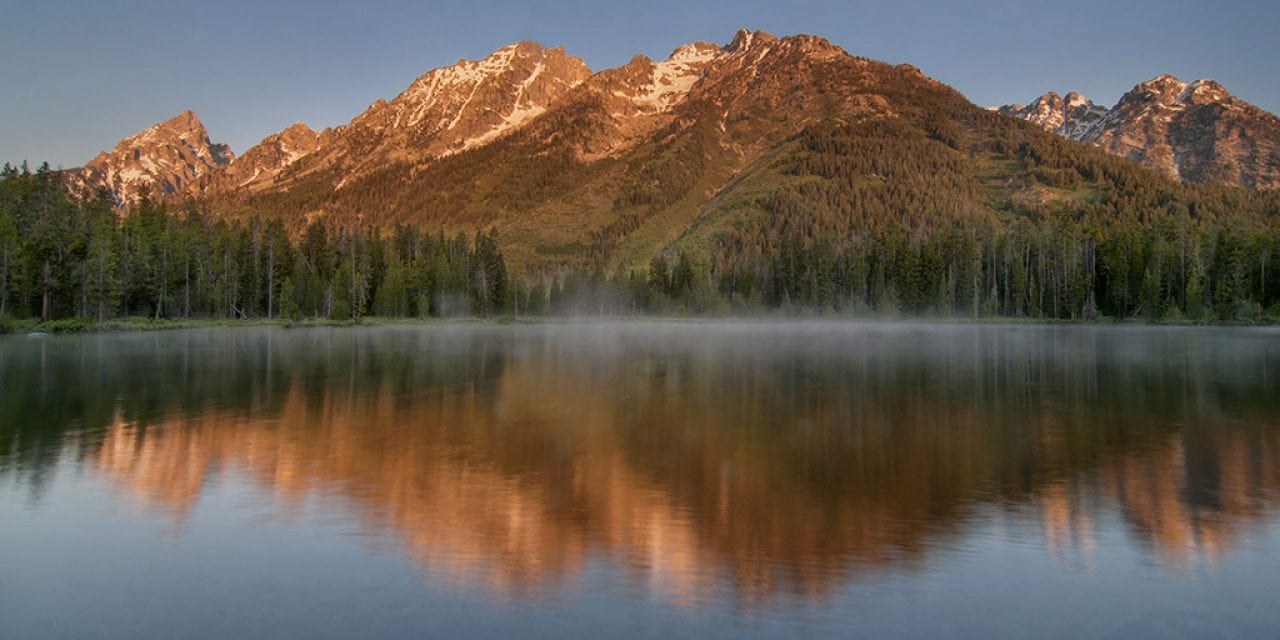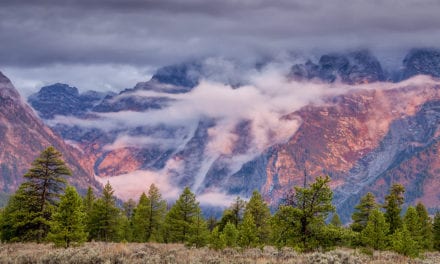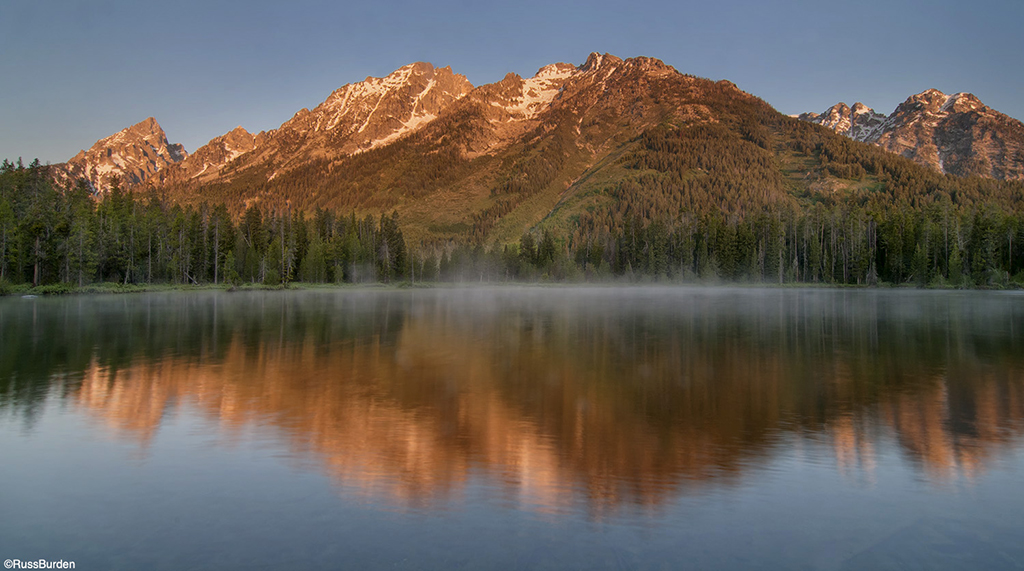
Ultra-wide-angle lenses are a unique breed. In order to maximize their potential, there are characteristics they possess that need to be realized. The shorter the focal length, the more the lens optically pushes back the subject and makes it appear smaller in the frame. The closer you get to a near subject, the more distorted it becomes. For good reason, ultra wides aren’t used for portraiture. If you’ve ever seen photos that depict intentional elongation of a subject’s nose, it was created with an ultra wide angle. The effect can be humorous, but for serious portraiture, not appealing. If ultra wides aren’t held perfectly perpendicular to the subject, it leans backward. The effect is called keystoning. The greater the tilt, the more the keystoning effect is pronounced. This distortion is often found in photographs of architectural subjects because the lens often needs to be pointed upward to include an entire structure.
In the image of the mountain and reflection made in Grand Teton National Park, I used a 12mm lens because I wanted to include the mountain along with the entire reflection in a single frame. This image shows off the aspect that a super wide possesses a very wide angle of view as it “pushes back” all subject matter from the point at which the photographer stands. It’s essential to keep the camera perfectly level to prevent distortion. I didn’t use a polarizer because of the vast expanse of sky. A polarizer has its maximum effect when it’s used 90 degrees to the sun. Had I spun a polarizer in this image, one part of the sky would be very dark and transition to a very bright part of the sky. This isn’t natural, hence the decision to not use it.

In the photo made in lower slot canyon in Page, Arizona, I used an 18mm lens as I was working in very tight quarters and needed to include a lot of stone in the image. Because of the subject matter, distortion isn’t evident even though the top dark section of stone I used to frame the composition was very close to my lens. If you work with abstracts, distortion can actually be used to your advantage. It’s essential to realize that very small camera movements translate to very different compositions based on the immense angle of view seen through the viewfinder. With this in mind, be cognizant of small shifts to the right, left, up or down when you compose your picture.
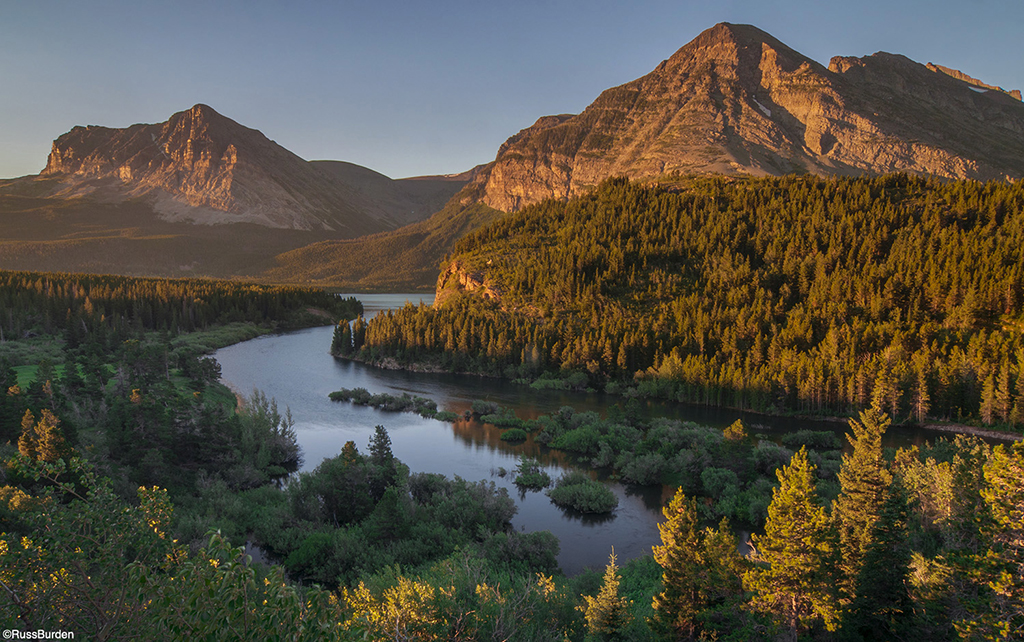
In the photo of the two mountain peaks and S curve in the river, I used a 14mm lens to take in the entire scene and create balance in the composition with the two peaks. Landscape photographers often use wides and ultra wides to include a foreground subject. The hint of light on the foliage in the lower left along with the warm sun on the lower right trees beckoned me to include them in the foreground. Because this is a full-frame image, the only way I could include all elements was via the use of an ultra wide.
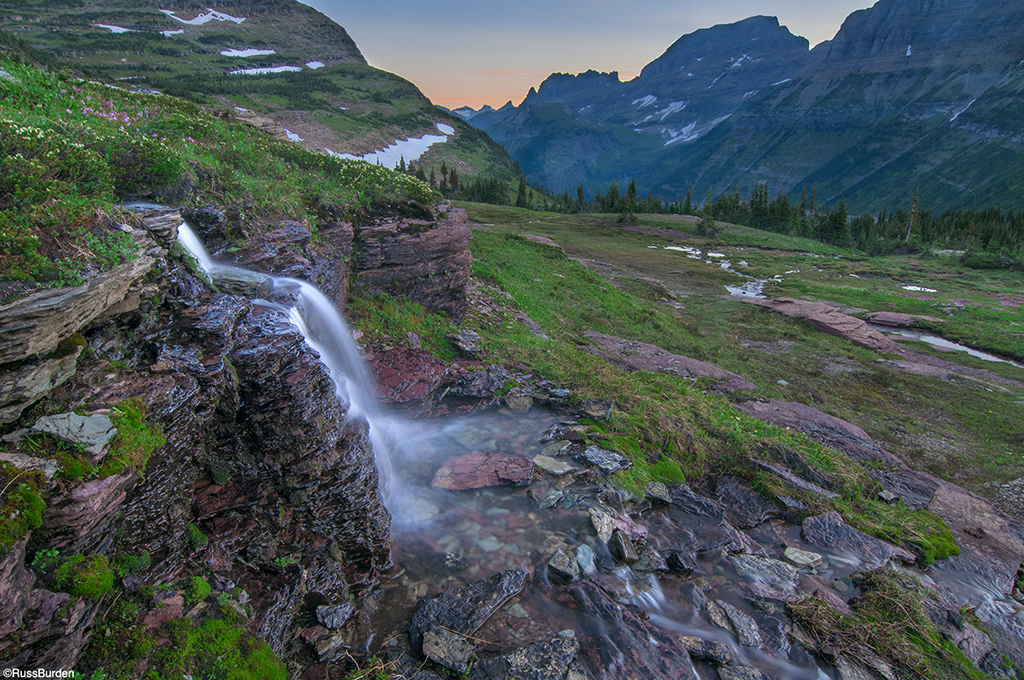
In the final image made in Glacier National Park at dawn, I used a 15mm lens. I chose this image to include in the week’s tip to show how the distortion of a super wide can be used to your advantage. The actual cascade in the left portion of the photo was quite small. By getting very close to it with my tripod, I was able to make it look quite large. The mountains on the right side of the photo appear much smaller because they were far away. In looking at the photo, the cascade and foreground rocks look bigger than the mountain and trees, obviously not the reality. By getting very close to a small foreground, it can become a primary element in a composition and create a great amount of depth. The illusion of depth is depicted as the viewer’s eye is lead through the foreground, mid-ground and background of the picture. Use this distortion to your advantage.
Visit www.russburdenphotography.com for information about his nature photography tours and safari to Tanzania.
The post Caution: Wide Load appeared first on Outdoor Photographer.

